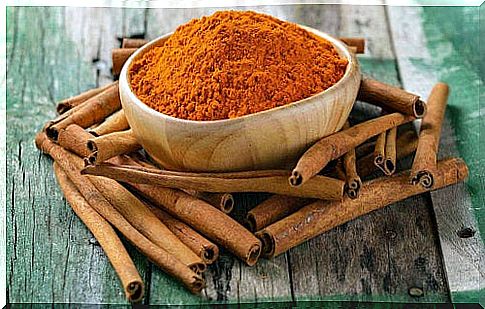4 Spice-based Remedies Backed By Science

Most of us know spices for their culinary and medicinal uses. As they add flavor and aroma to foods, we tend to use them when cooking meats, vegetables and stews in a wide variety of recipes. In addition, people traditionally make spice-based remedies to combat certain pains and diseases.
But how much truth is there in these medicinal properties? What do the surveys tell us?
Fortunately, in recent years, specialists have conducted many studies to analyze the effects of this type of ingredient on our health. Many of the benefits that people attribute to spices are supported by science. So let’s discover what they are!
Spice-based remedies backed by science
The majority of the spice-based remedies come from popular literature and anecdotal data that talk about the benefits. But hoping to determine if spices really have an effect, many researchers have dedicated their time to studying these properties.
For example, a review published in the journal Critical Reviews in Food Science and Nutrition points out that the spices that contain chemical compounds such as phenylpropanoids, terpenes, flavonoids and anthocyanins are the ones that offer a potential therapeutic effect.
In addition, many people claim to have antioxidant, analgesic, anti-inflammatory and antimicrobial activity. This may explain their ability to improve our health. Despite this, we must keep in mind that no remedy of this kind is a preferred therapeutic solution or a substitute for medical treatment.
Because of their properties, spices simply have a positive effect when faced with certain health problems. In any case, as they are not exempt from causing side effects, you should use them with caution and consult a doctor beforehand. Let’s take a look at what these four means are.
Spice-based remedies: Turmeric for pain and inflammation
Turmeric is one of the most researched spices with therapeutic potential in recent years. Specifically, we can use it to make spice-based remedies for pain and inflammation.
The evidence for this is shown in a pilot study published in Phytotherapy Research; people with arthritis noticed that their pain was reduced after taking 500 mg of turmeric.
Other studies, like this one, published in the journal Foods, support the same effects and suggest that it can be just as effective against pain as ibuprofen when it comes to osteoarthritis of the knee. However, it still needs further investigation.
We can consume this spice in doses of 2 g to 5 g. You can take it as a tablet, extract or tea. You can even cook it in the more traditional way like “turmeric milk”, where you add half a tablespoon. powdered turmeric for a cup of warm milk.

2. Spice-based remedies with ginger for pain and nausea
Specialists have studied the active ingredient in ginger, gingerol, for its potential as an analgesic, antioxidant and anti-inflammatory agent.
A systematic review published in the Nutrition Journal emphasizes that ginger extracts are helpful in reducing chronic subjective pain without the risk of non-steroidal anti-inflammatory drugs (NSAIDs).
In turn , a study published in Integrative Medicine Insights determined that this spice may be a remedy with anti-vomiting potential. It is an economical option that helps control nausea and vomiting. However, several studies are required to determine the appropriate dose.
For now, you can use it in moderate amounts. Simply add a teaspoon of grated ginger to a cup of water. If you want, you can add a little bit of honey to sweeten it or lemon juice to add a citrus flavor. You can drink this spice-based remedy 2 or 3 times a day.
Cinnamon to reduce blood sugar levels
Be careful with this one! Before trying this natural spice-based remedy, it is important to keep in mind any medical recommendations.
Although studies suggest that cinnamon is beneficial when it comes to controlling glucose levels, you should not take it in large amounts, nor should you use it to replace medication.
Even when undergoing some form of medical treatment, it is better to consult a professional to avoid interactions. With that said, we will look at what the surveys say. Cinnamon contains a substance called cinnamon aldehyde. That’s what specialists say gives the spice its properties.
Another study published in the Journal of Diabetes Science and Technology highlights that cinnamon helps increase the body’s sensitivity to the transport of insulin and glucose. It also improves the glucose rate in healthy individuals and has beneficial effects on patients with metabolic syndrome.
Similarly , an article in the medical journal Diabetes, Obesity and Metabolism notes that studies have shown that this spice can reduce fasting blood sugar levels by 10 to 29% in diabetic patients.
The recommended dose varies between 1 g and 6 g per day. You can include it in your diet as an infusion, a shake or otherwise. The important thing is that you avoid consuming it in excessive amounts.

4. Spice-based agents: Cayenne pepper for pain
Of all the many spice-based remedies available, those made with cayenne pepper are one of the most widely accepted. In fact, many people today use extracts from this spice when making pharmaceutical products. This is due to its active compound we know as capsaicin. It has analgesic and anti-inflammatory effects.
A review published in the journal Molecules shows that studies have confirmed that capsaicin is helpful when it comes to relieving pain. Specifically, it has modest yet beneficial effects against several pain syndromes, such as postherpetic neuralgia, diabetic neuropathy, and chronic musculoskeletal pain.
To take advantage of these properties you can buy a prescription for 8% capsaicin. In addition, it is also available in extracts and supplements. In any case, you should always consult a doctor first.
If you want, you can also make a homemade spice-based remedy with cayenne pepper. To do this, mix a tablespoon of cayenne pepper with a cup of coconut oil. Then heat it in a water bath until the ingredients are well mixed. Leave it on and then apply it topically on the painful areas.
Conclusion
Thanks to the research that specialists have conducted in recent years, we are today able to use some spice-based agents with full confidence.
However, keep in mind that they are not meant to replace a medical treatment – they are just meant to help with the pain. To ensure that you use them safely, you should consult your doctor and determine their possible side effects and interactions.









